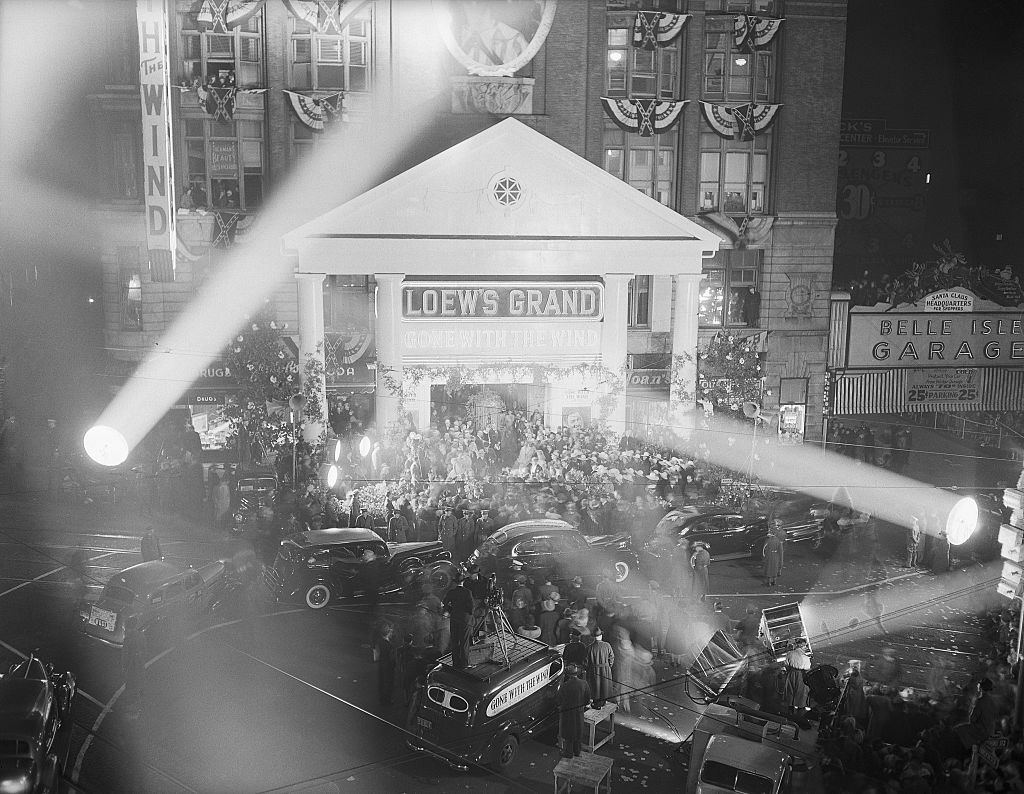The top-selling movie of all time is still this Civil War classic

Photo from “Gone with the Wind” premier. (Getty Images)
SUMMARY
Movie studios love to identify and praise the latest “highest-grossing” film, a title that shifts easily every few years as inflation hits ticket prices. However, the highest-grossing movie of all time, adjusted for inflation, is still Gone with the Wind, a Civil War movie that spread Confederate Lost Cause myths and became an enduring symbol of the Old South.
The story of Gone with the Wind can start in a few places: with the Civil War itself, with the Lost Cause myth, or with a journalist disabled by injury.
Writing Gone with the Wind
When Margaret Mitchell hurt her ankle in 1926, she killed time by setting up a Remington typewriter given to her by her husband and authoring a novel. It was her first, her only, and one of the fastest selling in history. Gone with the Wind sold a million copies in its first six months of release in 1936.
Ironically, the book that it knocked out of the No. 1 spot — the top-selling American novel before Gone with the Wind — was the anti-slavery, pro-abolition novel Uncle Tom’s Cabin that helped lead to the Civil War.
In 1937, Gone with the Wind won Mitchell the Pulitzer. And then Hollywood came calling. Producer David Selznick paid a record $50,000 for the movie rights.
Making the movie
And that investment paid off as well for Selznick as the novel had for Mitchell. The movie sold out theaters around the world, especially in the US and Europe. More than a million people flooded into Atlanta for live events and screenings when the movie premiered.
But there was an awkward part of Gone with the Wind’s success. The story whitewashes slavery and its role in the Civil War. And the novel refers to the Ku Klux Klan as a “tragic necessity.”
In reality, the Confederate states’ declarations of causes highlighted the importance of slavery in their decision to secede. Two states argued that slavery should be expanded, three attacked abolitionism, two listed the economic importance of slavery, two complained that the Northern states failed to enforce the Fugitive Slave Act, and four attacked President Abraham Lincoln as a suspected abolitionist.
Other speeches, documents and newspapers from the time also paint a clear picture of the most important division between the states: slavery.
But in Gone with the Wind, the war is entirely a defense against Northern aggression. And slavery is portrayed as a benign institution where happy Black people willingly help their owners.
Backlash and protests
Black leaders from the NAACP and other organizations encouraged Selznick to leave behind the worst elements of the novel. And, to be fair, he did alter it a bit. He removed most references to the KKK and the worst of the racial slurs. Black protestors even encouraged a boycott — but this article wouldn’t exist if they’d been successful.
In the movie’s defense, it shows the painful reality of war — the wounded and dead — in a way that few movies attempt. Literally thousands of actors and dummies lie in rows as Scarlett O’Hara walks through them, and overworked doctors are shown barely able to treat any of the casualties.
So, you know, it’s got that going for it in the honesty department.
SHARE
